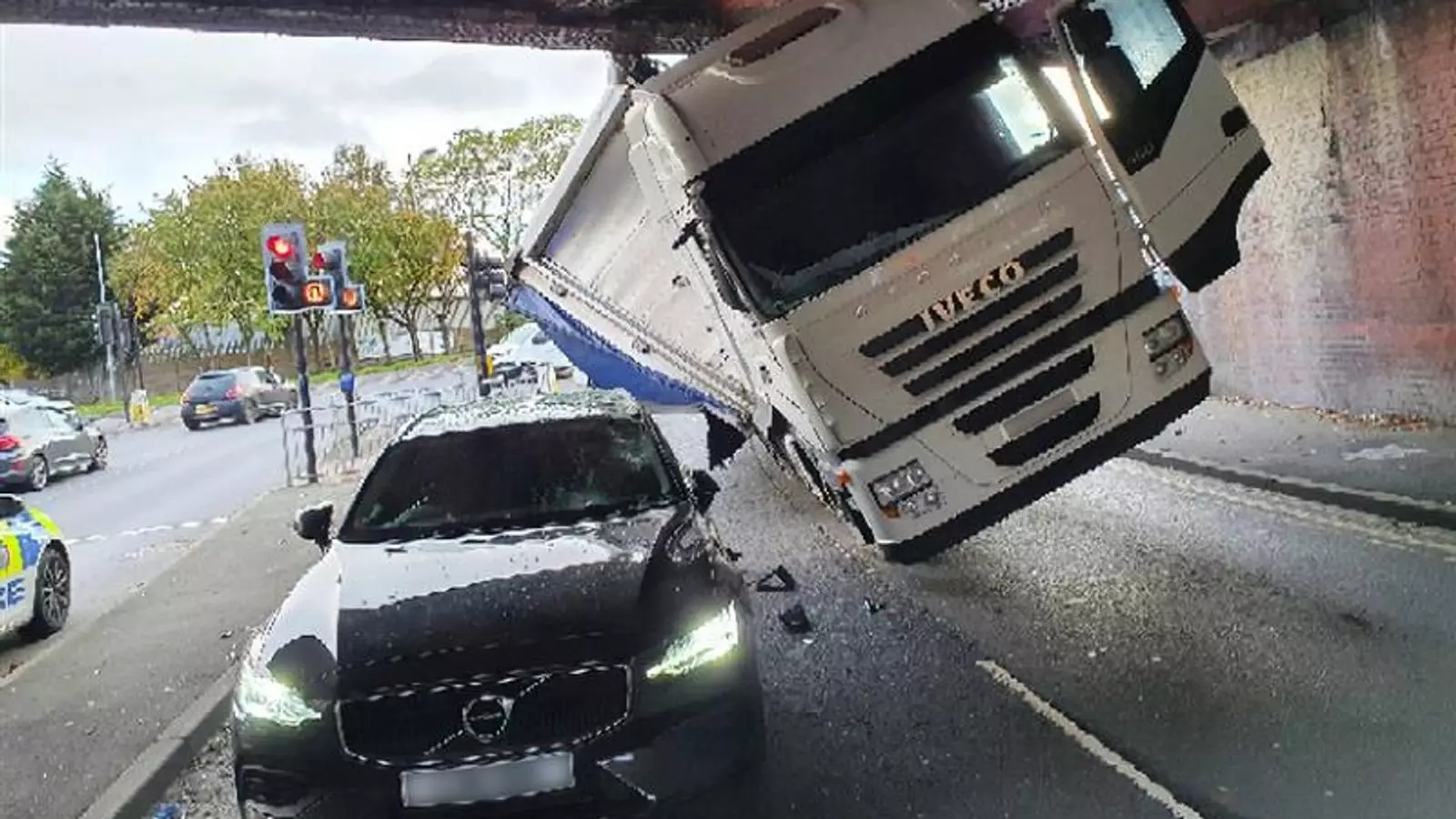The road can be a perilous place, and for some, moments of sheer terror loom large, as seen in the harrowing account of Ian Lee, a 60-year-old motorist from Wakefield, West Yorkshire. Ian describes a life-threatening incident that left him shaken but ultimately grateful to be alive. While navigating home, his vehicle was violently struck by a stolen lorry, one that bore cloned number plates, leading to a disastrous collision. This startling occurrence underscored the dangers posed by uninsured and illegal drivers, a reality that affects countless individuals on the road.
In an instant, a harmless drive turned into chaos. Ian vividly recalls the moment: “I’d just set off from the traffic lights and, all of a sudden, there was an almighty crash.” The disorienting experience left him in a state of shock as he emerged from his wrecked vehicle to assess the damage, only to find shards of glass everywhere—an unsettling reminder of how quickly things can go awry.
The implications of uninsured driving extend beyond individual experiences; they represent a significant issue within the UK’s road traffic landscape. According to statistics from the Motor Insurers’ Bureau (MIB), it is estimated that every 20 minutes, a person in the UK becomes a victim of an accident involving an uninsured or hit-and-run driver. Alarmingly, at least one person each day suffers injuries severe enough to necessitate lifelong care. Such data signifies a pressing public safety concern that merits immediate attention from authorities and the community alike.
The MIB has identified several hotspots for uninsured driving, with a disturbing concentration of incidents reported in the West Midlands. Strikingly, eight out of fifteen cited areas are based there, reinforcing the urgent need for targeted interventions. Other locales, such as London, Northumbria, and Greater Manchester, also record high levels of uninsured driving. It’s evident that certain regions are grappling more profoundly with this issue, yet it is one that impacts the nation as a whole.
In a revealing display of data, the MIB compiled a list of postal codes representing the most frequent occurrences of uninsured drivers. Birmingham emerges as a focal point, being home to numerous entries on the list, suggesting a trend that health and safety officials need to address. This includes areas like B11, B21, and B8, alongside other notable locations like Wolverhampton and North Tyneside.
For instance, Croydon reported the highest volume of claims against uninsured drivers—30 in total. However, despite this striking figure, it ranked only 176th due to its considerable population density, highlighting the complex dynamics behind these statistics.
With these alarming revelations, the MIB initiated the “Operation Drive Insured” campaign in conjunction with UK police forces. This operation is aimed at curbing the prevalence of uninsured drivers and enhancing road safety for everyday motorists. It demonstrates a concerted effort to address an issue that costs the UK economy an estimated £2.4 billion a year, accounting for medical care, emergency services, and loss of productivity due to accidents.
The campaign is timely, considering that nearly 115,000 uninsured vehicles have already been seized this year alone. Under existing laws, offenders face severe penalties, including a fixed penalty notice, points on their licenses, potential vehicle seizure, and risk of court-imposed fines.
Personal accounts like Ian’s serve as urgent reminders of the risks inherent in our transportation system, one that is all too often compromised by reckless behavior. As society grapples with these issues, it’s crucial for law enforcement agencies, policymakers, and citizens alike to advocate for safer roads, more stringent measures against uninsured drivers, and enhanced public awareness.
Caught in the crosshairs of uninsured driving is not just a matter of individual safety; it’s a systemic crisis that demands resolution. The collective responsibility lies not just with insurance providers and regulatory bodies, but also with each and every driver who must understand the implications of their actions on others. Only through community vigilance and rigorous enforcement will the narrative of safer roads and responsible driving truly begin to change.


Leave a Reply